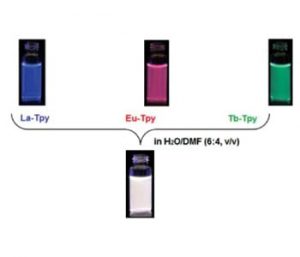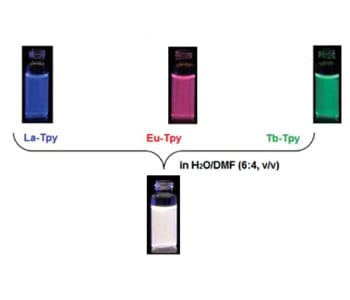 Researchers eager to develop chemical sensors and light-emitting devices are exploring an increasing number of photoluminescent mechanisms. Among luminescent materials, white light emitters are of particular interest, but their synthesis remains challenging.
Researchers eager to develop chemical sensors and light-emitting devices are exploring an increasing number of photoluminescent mechanisms. Among luminescent materials, white light emitters are of particular interest, but their synthesis remains challenging.
P. Chen and N. Holten-Andersen from the Department of Materials Science and Engineering at Massachusetts Institute of Technology have now demonstrated a facile and potentially universal approach to white light-emitting materials synthesis. Their method is based on the combination of red, green, and blue luminescence from isostructural lanthanide metal-coordination complexes.
A thorough investigation of its thermo-, mechano-, and chemo-chromic properties demonstrates this new white light-emitting molecular platform to be multi-stimuli-responsive due to the dynamic nature of the ionic lanthanide coordination bonds.
The simplicity of their approach suggests a strong potential for the straightforward integration of metal-coordination-based multi-stimuli-responsive molecular designs into more advanced engineering systems such as semi-solid-state lighting and microfluidic detection platforms.

















